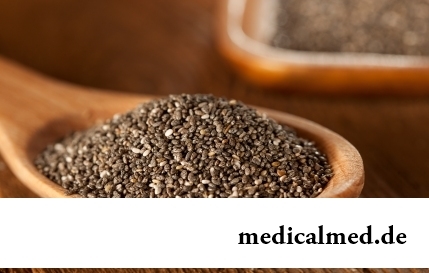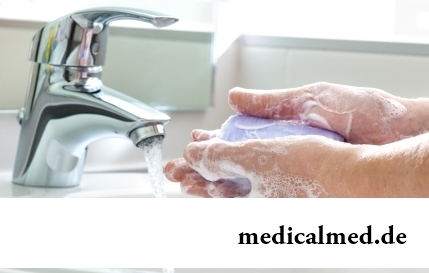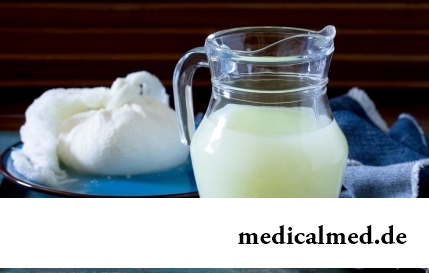





Klaforan
Application instruction:
 Klaforan – semi-synthetic antibiotic medicine of group of cephalosporins for parenteral use.
Klaforan – semi-synthetic antibiotic medicine of group of cephalosporins for parenteral use.
Form of release and structure
Klaforan is issued in the form of powder for preparation of solution for intravenous and intramuscular administration: yellow-white or white color (in glass colourless bottles, on 1 bottle in a cardboard pack).
1 bottle contains active ingredient: tsefotaksy – 1 g (in the form of a tsefotaksim of sodium – 1,048 g).
Indications to use
Klaforan is appointed at therapy of the diseases of infectious and inflammatory character caused by microorganisms, sensitive to action of a tsefotaksim:
- Infections of respiratory and urinogenital system, soft tissues, skin, joints, bones, the central nervous system, including meningitis (except listeriozny);
- Intraabdominal (intra belly) infections, including peritonitis;
- Septicaemia;
- Endocarditises;
- Bacteremia.
For prevention of infectious complications drug is used when carrying out obstetric and gynecologic and urological operations and surgical interventions on digestive tract.
Contraindications
Klaforan's use contraindicated with hypersensitivity to cephalosporins.
At dissolution of powder of Klaforan the following contraindications to solution use exist lidocaine (intramuscular introduction):
- Intravenous administration;
- Endocardiac blockade without the established pacemaker;
- Heavy heart failure;
- Age up to 2,5 years (intramuscular introduction);
- Hypersensitivity to lidocaine or other local anestetichesky means of amide type.
It is not necessary to appoint Klaforan to pregnant women as there are no reliable data confirming its efficiency and safety. In need of performing therapy during a lactation breastfeeding is recommended to be interrupted.
Route of administration and dosage
Klaforan's solution is entered intramusculary or intravenously (as a slow injection or infusion).
At normal function of kidneys by the adult it is recommended to adhere to the following mode of dosing:
- Uncomplicated gonorrhea: once intramusculary 0,5-1 g;
- Uncomplicated infections of moderate severity: intramusculary or intravenously, a single dose – 1-2 g, daily – 2-6 g, an interval between introductions – 8-12 hours;
- Heavy infections: intravenously, a single dose – 2 g, daily – 6-8 g, an interval between introductions – 6-8 hours.
At insufficient sensitivity of strains of an infection to effect of drug the only means of confirmation of efficiency of Klaforan is the test of definition of sensitivity to it.
Adults at functional disturbances of kidneys (at the clearance of creatinine (CC) of 10 ml a minute and less) should lower a single dose twice, keeping break duration between introductions (the daily dose at the same time decreases twice).
At impossibility to measure KK it it is possible to calculate, based on serum creatinine level using Kokroft's formula for adults.
Men can apply one of two formulas:
- Body weight (kg) x (140 age)/72 x creatinine of serum (mg/dl);
- Body weight (kg) x (140 age)/0,814 x creatinine of serum (µmol/l).
Women to calculate KK should apply a formula: 0,85 x an indicator for men.
The patient who is on a hemodialysis Klaforan appoint 1-2 g in a daily dose (is defined by weight of an infection; solution is entered after the end of a procedure).
The recommended dosing mode for children:
- Prematurely been born children (up to 1 week of life): intravenously, a daily dose – 0,05-0,1 g/kg, divided into 2 introductions with a break of 12 hours;
- Prematurely been born children (1-4 weeks of life): intravenously, a daily dose – 0,075-0,15 g/kg, divided into 3 introductions with a break of 8 hours;
- Children with body weight to 50 kg: intravenously or intramusculary, a daily dose – 0,05-0,1 g/kg (it is entered with a break of 6-8 hours). It is not necessary to exceed a daily dose of 2 g. At heavy infections, including meningitis, increase in a daily dose is possible twice;
- Children with body weight from 50 kg: drug is used in adult doses.
To children up to 2,5 years strictly contraindicated intramuscular introduction of Klaforan dissolved by 1% lidocaine.
For the purpose of prevention of developing of postoperative infections before carrying out operation during an introduction anesthesia Klaforan enter intramusculary or intravenously in a dose of 1 g. Repeated introduction in the same dose is carried out in 6-12 hours after operation.
When imposing on an umbilical vein of clips during performing Cesarean section solution is entered intravenously in a dose of 1 g, in 6-12 hours repeatedly enter the same dose of drug (intramusculary or intravenously).
The doctor establishes therapy duration individually.
For preparation of solution for intramuscular introduction it is necessary to dissolve powder sterile water for injections: 4 ml for 1 g of powder and 10 ml for 2 g. As solvent it is possible to use 1% lidocaine solution (intravenous administration is strictly contraindicated).
For preparation of solution for intravenous administration of 1 g or 2 g of powder dissolve in 40-100 ml of infusion solution or sterile water for injections. The injection should be carried out slowly for 3-5 minutes (because of possible development of life-threatening arrhythmias at Klaforan's introduction through the central venous catheter). For infusions it is possible to use such solutions (concentration of a tsefotaksim of 1 g / 250 ml) as: water for injections, 0,9% sodium chloride solution, Ringer's solution, 5% solution of glucose (dextrose), sodium lactate solution, and also solutions yonosterit, гемакцель, 12% реомакродекс, 6% Macrodexum, тутофузин Century.
At dissolution of powder it is necessary to provide aseptic conditions, in particular if Klaforan's solution is entered not at once.
Side effects
- Cardiovascular system: in isolated cases – arrhythmias (when carrying out bolyusny introduction through the central venous catheter);
- Urinary system: deterioration in function of kidneys (increase in level of creatinine), in particular at simultaneous use with aminoglycosides; very seldom – intersticial nephrite;
- Alimentary system: are possible – vomiting, nausea, abdominal pains, increase in activity of liver enzymes (gamma глутамилтрансферазы, alaninaminotranspherases, lactate dehydrogenases, aspartate aminotransferases, an alkaline phosphatase) and/or bilirubin, diarrhea (can demonstrate to development of a coloenteritis that sometimes is followed by emergence in Calais of blood; a special form of a coloenteritis pseudomembranous colitis is);
- Central nervous system: encephalopathy (at introduction of high doses), in particular against the background of a renal failure;
- Hemopoietic system: neutropenia; seldom – an eosinophilia, thrombocytopenia, an agranulocytosis; in isolated cases – hemolitic anemia;
- Allergic reactions: small tortoiseshell, erubescence, Quincke's disease, rash, bronchospasm; very seldom – Stephens-Johnson's syndrome, a mnogoformny erythema, an acute anaphylaxis, a toxic epidermal necrolysis (Lyell's disease);
- Local reactions: an inflammation in a solution injection site;
- Others: fever, weakness, superinfection.
At therapy of borreliosis development of the following disturbances is possible: the complicated breath, skin rash, fever, an itch, Yarisha-Gerksgeymer's reaction (in the first days of therapy), increase in level of enzymes of a liver, a leukopenia, discomfort in joints.
Special instructions
Before Klaforan's use it is necessary to collect the allergological anamnesis, in particular concerning instructions on allergic diathesis, reaction of hypersensitivity to a beta laktamnym to antibiotic drugs. In 5-10% of cases there is a cross allergy between cephalosporins and penicillin. With extreme care Klaforan it is necessary to appoint the patient with instructions in the anamnesis to allergic reactions to penicillin.
Existence of anamnestic data on reactions of immediate hypersensitivity to cephalosporins is a strict contraindication to Klaforan's use. At any doubts at the first administration of solution presence of the doctor is necessary that is connected with probability of anaphylactic reactions.
At development of reactions of hypersensitivity Klaforan cancel.
In the first weeks of therapy development of pseudomembranous colitis which is shown by heavy long diarrhea is possible. The diagnosis is confirmed by a histologic research and/or a kolonoskopiya. This complication belongs to very serious therefore it is necessary to cancel immediately therapy and to appoint adequate treatment (including oral administration of metronidazole or Vancomycinum).
At co-administration of Klaforan with potentially nephrotoxic medicines (aminoglikozidny antibiotics, diuretics) it is necessary to control function of kidneys that is connected with danger of nephrotoxic action.
In need of restriction of consumption of sodium it is necessary to consider that in a tsefotaksim of sodium salt 48,2 mg/g of sodium contain.
At use of drug use of glyukozooksidazny methods of determination of level of glucose in blood is recommended that is connected with development of false positive results at use of nonspecific reactants.
During therapy emergence of false positive test of Koombs is possible.
It is necessary to control Klaforan rate of administering.
At long therapy (longer than 10 days) it is necessary to carry out control of a picture of peripheral blood. At development of a neutropenia drug is cancelled.
Medicinal interaction
At joint appointment of Klaforan with some medicines there can be following effects:
- Probenetsid: delay of excretion and increase in plasma concentration of a tsefotaksim;
- Drugs with nephrotoxic action: potentiation of their nephrotoxic effect.
Klaforan's solution cannot be mixed in one infusion solution or the syringe with solutions of other antibiotic drugs (including aminoglycosides).
Terms and storage conditions
To store in protected from light, the place, unavailable to children, at a temperature up to 25 °C.
Period of validity – 2 years.
Storage of the prepared solutions:
- The solution for intramuscular injections prepared using water for injections or 0,5% or 1% of solution of a hydrochloride of lidocaine: 8 hours (at the room temperature to 25 °C) or 24 hours (at storage at a temperature of 2-8 °C in the place protected from light);
- The solution for infusions prepared using infusion solutions: 8 hours (solution гемакцель, тутофузин or yonosterit) or 6 hours (10% solution of a dextrose (glucose), реомакродекс or Macrodexum);
- The solution for infusions or injections prepared using water for injections: 12 hours (at the room temperature to 25 °C) or 24 hours (at storage at a temperature of 2-8 °C in the place protected from light). Emergence of a pale yellow shade of decrease of the activity of drug does not mean.
The first vibrator was invented in the 19th century. It worked at the steam engine and intended for treatment of female hysteria.

Modern footwear is extremely various. It stopped being only protection for legs long ago. Today shoes, boots, barefoot persons in...
Section: Articles about health
Sometimes it seems that modern society was divided into two camps: representatives of the first are sure that only the woman has to be responsible for contraception, representatives of the second, respectively, are sure that it is destiny of men. Meanwhile Dov has a question of contraception...
Section: Articles about health
Striya (extension) are the defects of skin having an appearance of direct or wavy strips from 1 to 10 cm long and 1-5 mm wide. In most cases at women of a striya are located on a stomach, hips, a breast or buttocks. At athletes they can appear on shoulders and the internal surface of forearms. At initial stages of development of an extension have red or lilac color, but over time their coloring turns pale, and strips become whitish, getting a nacreous shade....
Section: Articles about health
Statistically, can only one of ten of our compatriots brag of a decent condition of an oral cavity. On среднестатистич...
Section: Articles about health
The chia plant, or the Spanish sage, is from South America. The indigenous people of the continent since ancient times used its seeds in food: small, but very nutritious kernels, in a form the reminding fasolina. Indians knew about useful properties of seeds of a chia, and applied...
Section: Articles about health
Olive oil – the product capable to make a powerful contribution to health of the person if it includes it in the diet. The rich vitamin composition of oil does it by a product number one from many diseases including from deadly. Only two tablespoons of oil from olives in day prevent emergence of diseases of vessels and heart, cancer, problems with digestion, presenilation, a depression and many other illnesses which treatment would demand a lot of time and forces. Let's consider on...
Section: Articles about health
Each person knows that fervescence is an illness sign. However about existence of diseases can to suite...
Section: Articles about health
Helminthosis is one of the most widespread diseases. Statistically, any species of helminths infected every third inhabitant of the planet. Most of specialists even consider these data strongly underestimated: some uninvited "cohabitants" of N...
Section: Articles about health
A lot of things depend on a condition of a backbone in a human body, a backbone - not only a support for a body, it also a receptacle for a spinal cord, that is why malfunctions with a backbone are so dangerous. To treat rachis diseases very difficult and long, it is much simpler and more correct not to bring to a disease. Conforming to the rules provided in this article it is possible to avoid the majority of the problems connected with a backbone including those which are considered to be age, but a cat...
Section: Articles about health
Among a set of the perfumery and cosmetic goods which are released today the special group is made by the means containing anti-bacterial...
Section: Articles about health
Statistically cystitis 25-30% of women up to 40 years have. With age this indicator raises, besides many do not get to statistics because do not see a doctor. The most sad that after the regular visits to doctors, long reception of antibiotics...
Section: Articles about health
Milk and products of its processing by right occupy one of the main places in a diet of the modern person. They contain proteins, necessary for normal life activity, fats, vitamins and microelements, and are an important part of various medical diets....
Section: Articles about health
Each person supports all life a SARS about 200 times. The peak of incidence falls on cold season, but to get sick from temperatures...
Section: Articles about health
Dogrose – one of the most widespread adornment and medicinal plants growing practically in all territory of our country. To most of Russians it is a beautiful bush it is known, first of all, as a source of fruits, extremely vitamin-rich....
Section: Articles about health
An eye of the person daily experiences considerable strain. The problem of preservation of sight is for many years directly connected with a question of supply of tissues of eye enough oxygen and nutrients. This task is carried out by small vessels – capillaries. For normal functioning of the visual device extremely important that they kept the integrity, but it works well not always. Microtraumas of eye vessels during which there are small hemorrhages it is extraordinary расп...
Section: Articles about health
Women quite often suffer from complexes concerning the sizes of the bust. Strangely enough, reason душевног...
Section: Articles about health
Zone hypostases under eyes - very widespread problem giving to people is a lot of inconvenience. Hypodermic fabric in these parts has very loose structure and almost does not contain collagenic fibers. Besides, the skin covering подглазья constantly is exposed...
Section: Articles about health
We live during an advertizing era. Daily each person receives a solid portion of persuasive councils about what to eat to be healthy and successful. Products about which we will talk today are combined by the following circumstance: all of them are positioned as the most useful and the most suitable for inclusion in a morning meal. Unfortunately, it is not true: these 10 products do not suit for breakfasts at all....
Section: Articles about health
It is difficult to revaluate importance of kidneys for an organism. These bodies not only perform work on purification of blood of decomposition products and выв...
Section: Articles about health
Practice of hypnotic impact on consciousness of the person contains about two millennia. During this time scientists managed to learn a lot of things about a phenomenon of hypnosis and learned to facilitate a condition of the patients having heavy illnesses with its help....
Section: Articles about health
Impossibility to conceive the child – a trouble of many Russian families. During quite long time was considered that main "culprits" of troubles such are women. Modern physicians claim that the situation is different: about a half of failures in attempts of reproduction are connected with male infertility....
Section: Articles about health
One of the major chemical processes happening in a human body are oxidation reactions. They go with participation of fats...
Section: Articles about health
Eyes – one of the most vulnerable areas on a face therefore age changes concern them first of all. Whether it is possible to keep look youth for many years and what procedures are offered for achievement of this purpose by cosmetologists? And maybe, only thing of a vari...
Section: Articles about health
The kid who was recently born is surrounded with love of adult family members and their cares without which the baby cannot exist. Some parents consider that gentle attachment and caress are quite enough that the child correctly developed and was happy, but it not so. It is important to know as much as possible about specifics of care of the baby, the reasons of his behavior and possible problems. Only the "able to see" love will provide to the little man that it is necessary for him....
Section: Articles about health
The stroke is one of the most widespread diseases of the person, annually in the world about 6 million cases эт are registered...
Section: Articles about health
You are office worker, the driver, the fan of winter sports or do not think of life without bicycle? You lead a slow-moving life and you move on the city only on the car? You have no constant partner and you do not love the protected sex? Attention! You one...
Section: Articles about health
Long time antibiotics were considered as a panacea from all diseases and were appointed even at insignificant symptoms of an infection. Even now not everyone knows in what force of antibiotics how and when they should be accepted. Let's discredit 7 popular myths about such drugs....
Section: Articles about health
